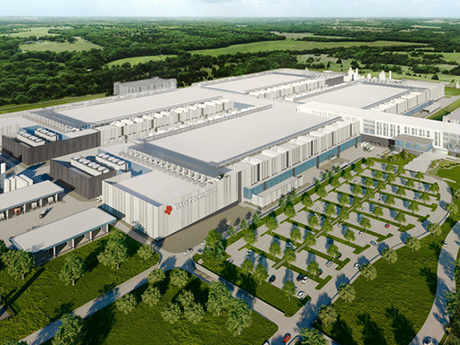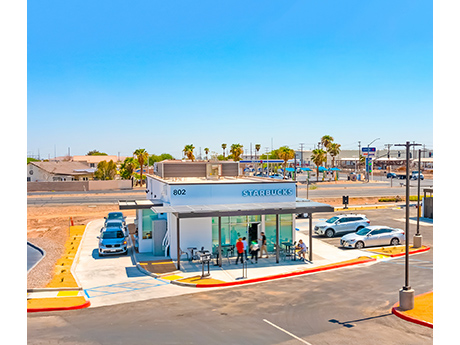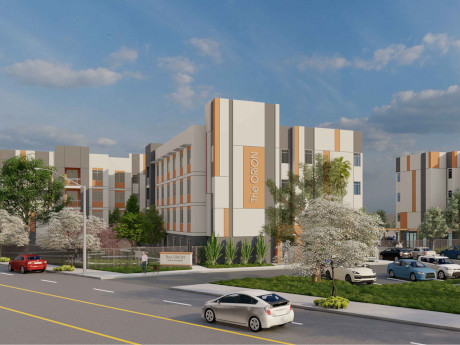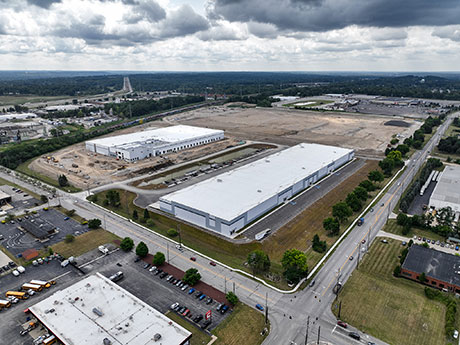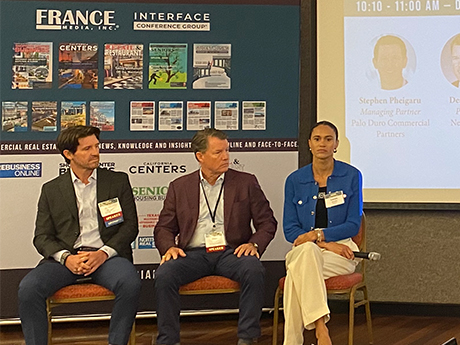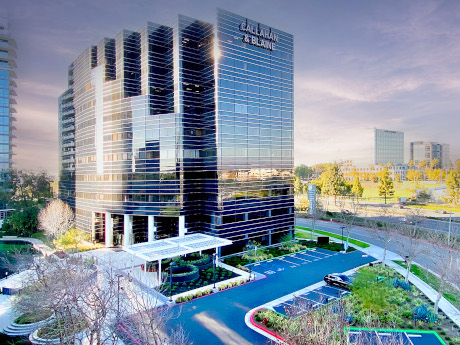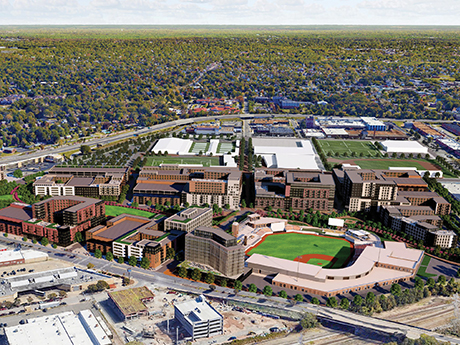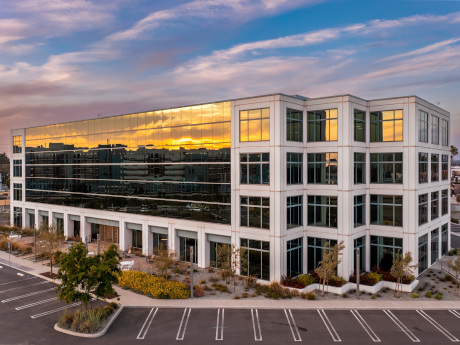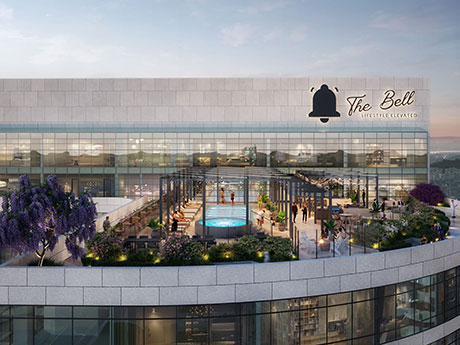By Taylor Williams An attractive, successful woman walks into a bar and posts up. Within minutes, multiple men have approached her, offering to buy her a drink. And while she doesn’t really need the freebie, who can blame her for accepting it? After all, nothing’s more American than having a little extra icing on your cake. To analogize this scenario to commercial real estate, think of Texas as the woman and the burgeoning semiconductor industry as the free drinks. The state’s economy was doing just fine without the mega-boost from manufacturing initiatives stemming from the 2022 CHIPS and Science Act, which has resulted in tens of billions of dollars in capital investment for North and Central Texas. But with a well-deserved reputation for welcoming businesses of all types, Texas wouldn’t be Texas if it didn’t court and embrace these manufacturers in these areas, which for many years were predominantly rural communities. Semiconductors, or computer chips, are essential elements of virtually all electronic and computing devices, including electric vehicles, phones, tablets, TVs, home appliances, solar panels and video game consoles. The CHIPS and Science Act laid the framework for the country to gain market share in terms of manufacturing these components, …
Market Reports
— By Matt Davis — Imperial County is deeply intertwined with agriculture, experiencing significant growth in both farmable acreage and the value of its agricultural outputs. The region has had a 20 percent increase in the number of farms, a 40 percent expansion in farmed acreage and a nearly 65 percent rise in the market value of agricultural products sold over the past five years. However, agriculture is not the only growing industry in the Valley. It will also soon be recognized for its lithium extraction and geothermal energy production, as well as its role as a strategic logistics hub. As newer industry sectors continue to grow and evolve in the region, their demand for land will also increase. Fortunately, Imperial County boasts ample available land to meet these needs. Investor interest in Imperial Valley land has surged as agricultural areas — despite continued growth — are increasingly transitioning to higher and better uses in key areas of the Valley. From Farming To Energy Forward-thinking investors and developers have begun to purchase and reposition legacy agricultural land to support emerging lithium mining operations in northern Imperial County and logistics users near the Calexico-East port of entry in the south. They …
Orlando’s industrial market has enjoyed consistently low vacancy, robust new development and significant rent growth year after year since the onset of the pandemic. While fundamentals remain strong, project deliveries and changing size preferences for leased space have caused a shift in activity. From an economic perspective, Orlando is well-positioned. The unemployment rate has decreased by 30 basis points since first-quarter 2024, reaching 2.9 percent, notably lower than the national average of 4.3 percent. Over the past year, nonfarm employment has grown by 1.4 percent with construction employment seeing a significant increase of 2.9 percent during the same period. Small to mid-sized spaces For the past 20 consecutive quarters, Orlando has maintained positive net absorption. Small bay and other tenants under 200,000 square feet have dominated leasing activity, while demand for spaces over 200,000 square feet has significantly slowed. As a result, year-to-date absorption is just over 800,000 square feet, representing a 40.8 percent decrease compared to 2023’s midyear total and the lowest midyear total since 2020. This slowdown in absorption is accompanied by a rise in vacancy rates, which have increased by 1 percent since last year and 3 percent since 2022. ATR Commercial Flooring took 150,600 square feet …
— By Pat Swanson — Orange County’s multifamily housing market is still facing challenges. These include rising operating expenses, such as escalating insurance costs and new regulatory standards like SB 721. However, I am optimistic that the county will experience a soft landing compared to other parts of the country. Inflationary pressures and stringent rent control measures in areas like Santa Ana have heightened financial burdens for property owners, impacting profitability and investment decisions. Investors are increasingly favoring higher-quality, long-term assets in premier coastal locations like Newport Beach where properties have shown robust rent growth, averaging 5 percent annually over the past five years. Our team of multifamily advisors works closely with clients to navigate this evolving landscape, emphasizing opportunities in high-demand, flight-to-quality assets. Seller-carry financing and loan assumptions have emerged as highly sought-after options, appealing to buyers seeking reduced upfront costs and flexible financing terms, while allowing sellers to maximize property value without heavy down payment requirements. There is pent-up demand in Orange County’s multifamily housing market, particularly for properties in the right areas. Our expertise lies in identifying and leveraging these opportunities for our clients. By understanding the nuances of market demand and regulatory changes, we can help …
By George Pofok, Cushman & Wakefield | CRESCO Real Estate The Northeast Ohio market has consistently been a stable industrial hub, and over the last couple years, has been attracting the interest of investors and developers from other regions. Spanning approximately 527 million square feet, this market stretches from Cleveland down I-77 to include Akron-Canton. In the second quarter of 2024, the overall vacancy rate decreased to 2.8 percent, driven by 1.1 million square feet of positive direct absorption, a strong recovery from the negative absorption in the first quarter. Over the past few years, the vacancy rate has remained between 2.4 and 3 percent. Leasing activity kicked off the year robustly, with 4 million square feet of leases in the first quarter. However, it normalized in the second quarter, with 1.6 million square feet leased, which was slightly below the usual pace. The market is expected to remain stagnant due to limited inventory and a lack of new speculative construction starts, which continue to hinder demand from local and regional tenants seeking to expand and backfill spaces. Leasing deals are trending longer, between five to 10 years, with annual rental rate increases averaging 3 to 4 percent. Meanwhile, the …
By Taylor Williams HOUSTON — High occupancy rates paired with low volumes of new construction have been the prevailing narratives in many major U.S. retail markets over the past couple years, and Houston is no exception. And while that dynamic ensures healthy rent growth within stabilized properties, when paired with high construction costs and higher interest rates, the result can be growth that feels rather sluggish. According to second-quarter data from Colliers, the Houston retail market currently has a vacancy rate of 5.2 percent, a mark that has held steady for the past year. The market added about 1.1 million square feet of new product through the first six months of 2024 to go with roughly 732,000 square feet of positive absorption. The average asking rent stands at $20.38 per square foot, which represents a 3.8 percent increase relative to the second quarter of 2023. Rosy as these figures appear on the surface, they do not tell the full story of the market. Most owners cannot afford to simply sit back and let the deals come to them at rents they dictate. For although demand exceeds supply of quality space, the aforementioned macroeconomic factors are squeezing owners’ profit margins, meaning …
— By Nellie Day — Employers all over the nation are looking for ways to bring employees back into the office. In many cases, it’s been a large ask, as employees have adapted to the work-from-home environment and its perceived perks. One of the biggest strategies employers have undertaken is creating an enticing environment where employees want to be. This can include intriguing office spaces, useful amenities, opportunities for socializing and beautiful outdoor spaces. This strategy can go even further when local businesses and municipalities work together. Such is the case with South Coast Metro Alliance, a non-profit corporation of Orange County, Calif.-based property owners and major businesses that have a long-term investment in the area through ownership and/or long-term leases. The economic development organization, which encompasses north Costa Mesa and south Santa Ana, has worked to ensure employers are proud of the spaces they can offer their employees — and that, in turn, employees are excited to return to the office. WREB spoke to Diane Pritchett, executive director of the South Coast Metro Alliance, to discuss the specific strategies employed by businesses and the South Coast Metro Alliance to reactive the local office environment. WREB: How has the introduction …
Richmond, capital of the Commonwealth of Virginia and centrally located between the rolling hills of the Blue Ridge Mountains and the sandy beaches fronting the Atlantic Ocean, remains a vibrant city with an educated and expanding workforce benefitting from the city’s thriving and diverse economy. Home to eight Fortune 500 companies and three Fortune 1000 businesses, Richmond’s unemployment rate of 2.8 percent, a 10-basis-point decrease year-over-year, is slightly above the state’s unemployment rate of 2.7 percent but well below the national rate of 4.3 percent, according to data from the U.S. Bureau of Labor Statistics. Richmond’s job market has remained robust, adding over 38,000 jobs from first-quarter 2020 through summer 2024. In the past 36 months alone, CoStar Group (2,000 new jobs), LEGO (1,760 new jobs), and SanMar (1,000 new jobs) have all announced significant corporate and capital commitments to the market. Government and education/health remain the largest regional employment sectors and have experienced the highest year-over-year employment increases of 3.7 percent and 4.7 percent, respectively. Richmond’s continued ability to retain and attract talent due to a high quality of life, affordable cost of living and access to an abundance of local and regional amenities has had a profound impact …
— By Marty Pupil — The Orange County office sector continues to battle through the early stages of a market turnaround as tenants adapt to new workplace strategies while balancing employee retention and company production. The market is beginning to thaw, however, as more tenants make decisions on their office space requirements, creating opportunities for tenant activity. Net absorption was negative at the onset of 2024, totaling 338,100 square feet. South County experienced the highest amount of move-outs at 199,002 square feet, followed by the Airport Area with 171,171 square feet. Central County, North County and West County submarkets combined for positive absorption of 32,073 square feet. Right now, positive absorption shows up in pockets of the market and can vary by submarket and quarter. Positive absorption for the overall market will become sustainable when new leasing activity reaches levels that are high enough to compensate for givebacks. Total vacancy in the first quarter rose 20 basis points quarter over quarter to 18.1 percent from 17.9 percent, while increasing year over year from 18 percent. Despite this, current vacancy remains well above the pre-pandemic 10-year average of 13.9 percent. For perspective, vacancy peaked at 19.2 percent during the financial crisis …
By Donald Lydon, Avison Young Cleveland offers a mix of hurdles and opportunities across its industrial, office and multifamily sectors. With limited speculative construction, landlords are poised to leverage rental increases. Meanwhile, developers eyeing Cleveland should anticipate longer lead times for new projects, navigating through municipal regulations and land availability challenges. This nuanced landscape presents openings for savvy investors, developers and occupiers looking to capitalize on Cleveland’s evolving real estate dynamics. Resilient and mature, yet relatively untapped industrial market presents opportunities to national developers. Cleveland’s industrial sector is in a strong position relative to similar Midwest markets. With vacancy rates comfortably low at around 4 percent, rents are edging upward as developers struggle to find capital outlay nationally and spec development has all but stopped in most markets. The current landscape features a mix of large distribution hubs and older, yet prime, manufacturing facilities in key locations across Cleveland and Akron. Many facilities leased to third-party logistics companies seem to be stockpiling goods where others sit nearly empty, reflecting evolving needs in logistics and storage amid ongoing supply chain adjustments. This dynamic is leading to diverse demands: from small to mid-sized multi-tenant flex spaces (10,000 to 30,000 square feet) to …


